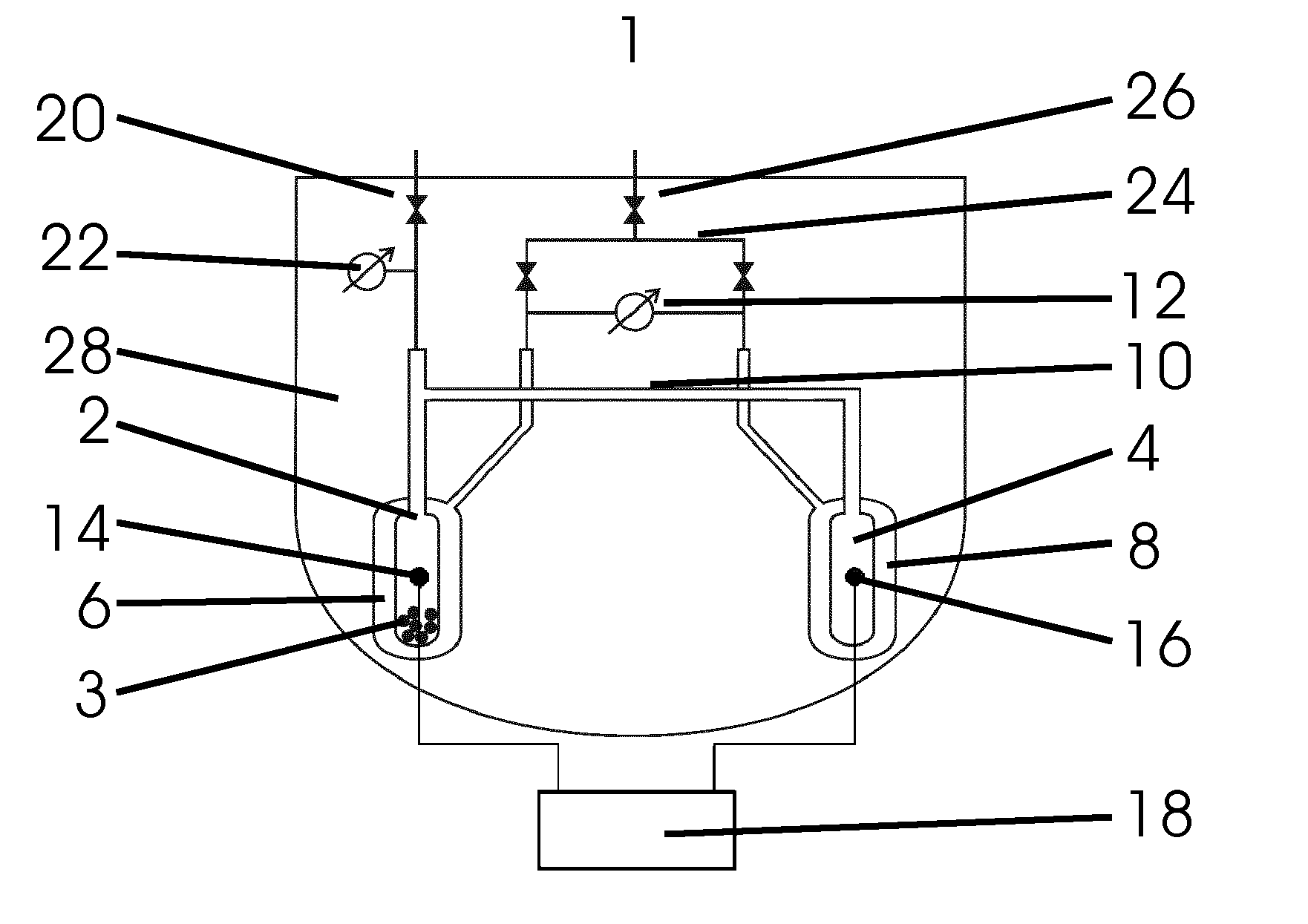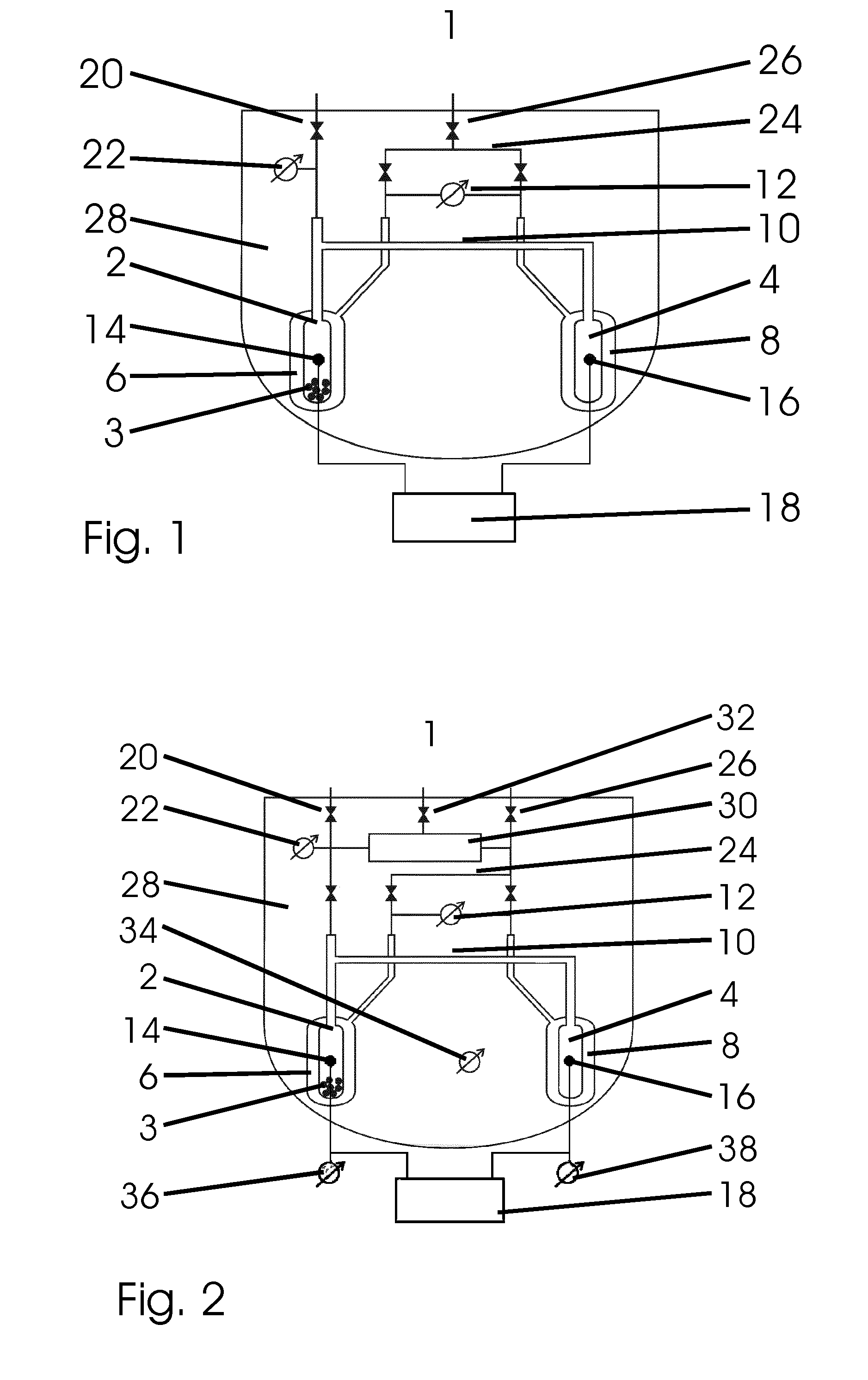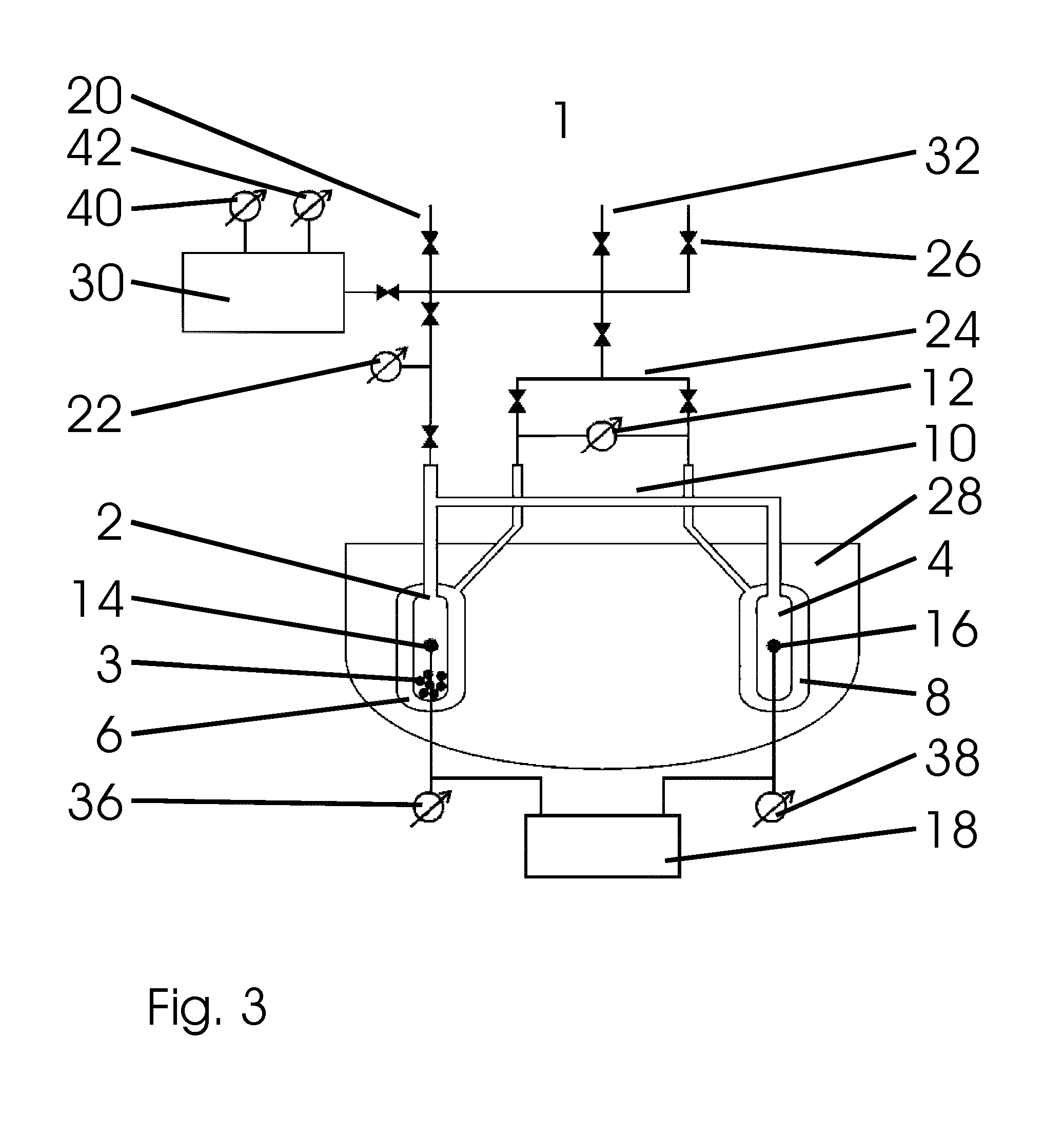Device and Method for Calorimetrically Measuring Sorption Processes
- Summary
- Abstract
- Description
- Claims
- Application Information
AI Technical Summary
Benefits of technology
Problems solved by technology
Method used
Image
Examples
first embodiment
[0049]a device 1 shown in FIG. 1 for calorimetrically measuring sorption processes has a sorption cell 2 for receiving a sample 3 as well as a reference cell 4, wherein the sorption cell 2 and the reference cell 4 are arranged symmetrically with respect to each other inside the device 1.
[0050]Respectively one gas connection 10 is arranged on the upper end of the sorption cell 2 and the reference cell 4, which connects the interior spaces of the both measurement cells 2, 4 so that sorption gas can be conducted simultaneously to both measurement cells 2, 4 and there is a pressure equalization in both measurement cells 2, 4.
[0051]The sorption gas is introduced via a supply line with shut-off valve 20, which leads along the main axis of the sorption cell 2 from inside the device 1 to the outside and is connected with the gas connection 10 above the sorption cell 2. The valve arranged on the upper end of the supply line with shut-off valve 20 seals the equipment in a gas-tight manner and...
third embodiment
[0073]FIG. 3 shows the invention. In the subsequent description, only the differences to the embodiment of the device 1 shown in FIG. 1 are covered.
[0074]The device 1 for calorimetrically measuring sorption processes shown here has a gas storage tank 30, which is connected in a blockable manner with respect to the rest of the device 1 by means of a line with a valve. A pressure measuring device 40 and a temperature measuring device 42 of the gas storage tank are arranged on the gas storage tank 30.
[0075]The supply line with shut-off valve 20, the device for filling with reference gas 26 and the blockable inlet 32 are connected with the gas storage tank 30 via a line in a blockable way. Starting from this line, two additional blockable lines lead to the sorption cell 2 and to the measurement gas volume 6 as well as to the reference gas volume 8.
[0076]Another difference to the embodiments shown above is the volume of the adiabatic vessel 28. In this embodiment of the invention, it no ...
PUM
 Login to View More
Login to View More Abstract
Description
Claims
Application Information
 Login to View More
Login to View More - R&D
- Intellectual Property
- Life Sciences
- Materials
- Tech Scout
- Unparalleled Data Quality
- Higher Quality Content
- 60% Fewer Hallucinations
Browse by: Latest US Patents, China's latest patents, Technical Efficacy Thesaurus, Application Domain, Technology Topic, Popular Technical Reports.
© 2025 PatSnap. All rights reserved.Legal|Privacy policy|Modern Slavery Act Transparency Statement|Sitemap|About US| Contact US: help@patsnap.com



